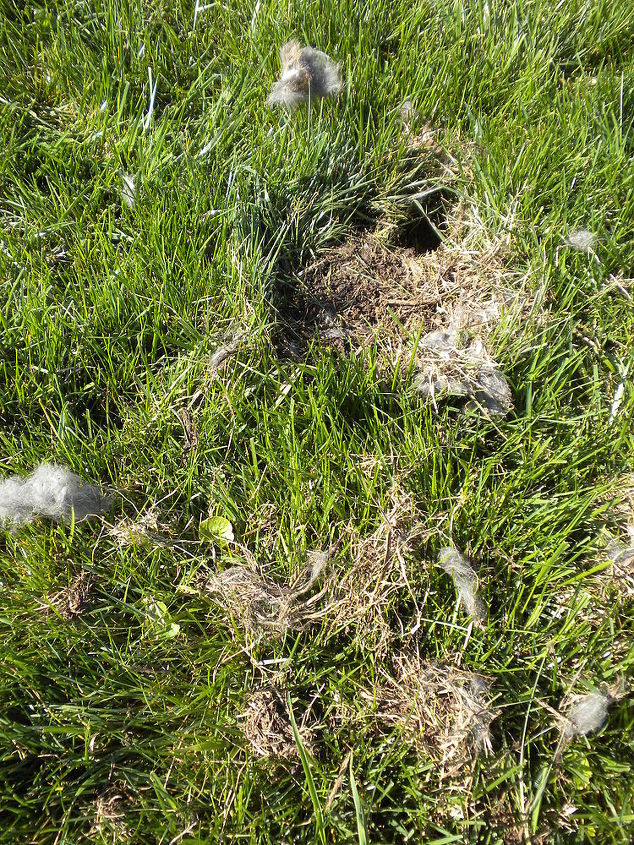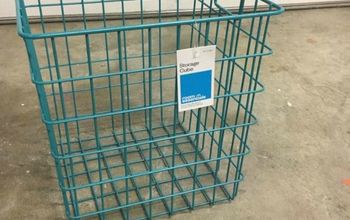Save the roses

Related Discussions
GNATS - How to get rid of them?
Somehow my house and garden got tiny gnats that killed my fuchsia plant and fly everywhere. I have tried ALL the Web recommendations - soap and oil dishes, sand in th... See more
Marigolds growing! Should I pinch the buds?
My marigold plants are growing. I heard that pinching the buds until Autumn will allow them to grow without killing the plant. Is this true?
Growing garlic
Growing our first garlic, should we wait until the leaves are drying out before we pick it? Husband picked first one today along with our first potatoes.
How to keep mice out of your garden?
Hi everyone, I have mice in my garden destroying my vegetables and I have also noticed them in the barn and shed. Please can someone tell me how to prevent them from ... See more
What's the best flower/plant to grow in Texas?
I know that opinions vary, but what's your opinion?!I have great luck w Rosemary plants. Green all year long.
Can someone tell me what kind of animal this was in my yard?
I thought maybe a rabbit was burrowing in my yard, but it's almost dead center of my lawn (not a very smart rabbit). The hole is not very deep, and I replanted it onc... See more
Is Creeping Charlie in your lawn a good thing or a bad thing?
Is there a sure-fire way to get rid of Creeping Charley?





The bugs you are referring to are most likely Japanese bettles.If they are finished flowering fro the season and are going dormant,slightly prune them. In the early spring you will use a three in one Rose care systemic system by Bayer,that is a fungicide,insect control and fertilizer.During the active growing season as well you will be spraying as needed a hoticultral oil
sprinkle them with Sevin Dust at your local home improvement store.
Because you didn't describe the insects, I've copied general information of how to treat some of the more common pests to roses. Also, I've included descriptions of different rose issues that can help identify the insect as well as the appropriate treatment. (Note: I've included contact information at the bottom of this information.)
http://ucanr.edu/sites/VCMG/Fighting_Common_Rose_Pests/
Insects and mite pests can cause havoc in a rose garden. They can blacken leaves, chew blossoms and leaves, distort blossoms and cause leaves to stipple or yellow. Pests can even make rose canes die back. That’s the bad news.
The good news is many rose owners maintain strong, healthy plants bursting with blossoms, with little to no insecticides. This is especially true of Ventura County’s dry interior valleys. The secret lies in selecting the right varieties for your area, tolerating minor insect damage and adopting good gardening practices.
Number-One Nuisance: Among roses, aphids are the most common pest. These hungry insects feast on rapidly growing plant parts such as buds and shoots, especially in spring and early summer. In moderate to high levels, aphids secrete large amounts of honeydew, which can cause a sooty mold that blackens leaves. In very high levels, aphids can kill rose buds or reduce flower size.
Tackle aphids before they become a serious problem. First, wash aphids off plant with a strong stream of water early in the day, so the foliage dries before evening. If that doesn’t work, try insecticidal soaps or neem oils, which only moderately affect the aphid’s natural enemies.
Fortunately, aphids have many natural enemies, including lady beetles, green lacewigs and parasitic wasps. Control ants around your roses with sticky barriers on canes to encourage more lady beetles. If you purchase lady beetles at the nursery, mist beetles and plants with water before releasing the insects. For best results, release beetles at dusk and place them on canes at the base of plants. Don’t be surprised when most fly away, especially after the aphid population is reduced.
Stippled or Yellow Leaves: Are your leaves bleached or stippled, with webbing? You may have spider mites. Often when the spider mites’ natural enemies have been killed by broad-spectrum pesticides, these tiny mites will increase in number. To reduce this pest, wash leaves periodically. If stronger controls are needed, try insecticidal soap, horticultural oil or neem oil.
In some areas, rose leafhoppers can be a problem. The stippling is larger in this case, and there is no webbing on the leaves’ undersides. Insecticidal soap will help.
Distorted Blossoms: If blossoms become distorted or streaked with brown, the culprit may be thrips. These tiny yellow or black insects prefer fragrant, light-colored or white roses. They also like numerous rose bushes planted together, because this provides a continuous-blooming habitat for their dining pleasure. To reduce these pests, clip and remove spent blossoms regularly.
Chewed Blossoms and Leaves: Several pests chew flowers and leaves – from Fuller rose beetles that leave ragged edges on leaves to leafcutter bees that cut semicircular holes. Rose slugs look like tiny caterpillars, but are the sluglike larva of a sawfly. Young rose slugs can skeletonize lower leaves, while larger ones can chew large holes. A strong stream of water or insecticidal soap will help reduce these pests.
Dead Rose Canes: Flatheaded borers lay eggs on diseased and stressed rose canes. The white larvae can kill canes or an entire plant. Another pest is the raspberry horntail, which also lays eggs on rose plants. The larvae can cause canes to wilt and die in spring, reducing the second bloom cycle. Scale insects cause small, grayish, round to oval encrustations on rose canes. For all these pests, remove and destroy any infested plant material. Insecticidal soap on remaining canes helps protect plant from further damage.
Gardener’s Friends: Minute pirate bugs, lacewigs and lady beetles are some of the natural predators of rose pests. Keeping a healthy garden, encouraging plant diversity among your roses and tolerating minor insect damage can go a long way towards attracting more of these natural enemies.
More Help: Want more rose gardening tips? The University of California Division of Agriculture and Natural Resources has information on beneficial insects as well as common rose pests and mites (Pest Notes, Publication 7466). Visit www.ipm.ucdavis.edu for a copy.
Free gardening advice is available by calling the Master Gardener Helpline at 805/645-1455. The helpline is staffed Tuesdays and Thursdays, 1-4 p.m.
Author: Teresa O’Connor is a Master Gardener with the Ventura County Cooperative Extension. For more information on the Master Gardener program, contact 805/645-1455.
Insects and mite pests can cause havoc in a rose garden. They can blacken leaves, chew blossoms and leaves, distort blossoms and cause leaves to stipple or yellow. Pests can even make rose canes die back. That’s the bad news.
The good news is many rose owners maintain strong, healthy plants bursting with blossoms, with little to no insecticides. This is especially true of VenturaCounty’s dry interior valleys. The secret lies in selecting the right varieties for your area, tolerating minor insect damage and adopting good gardening practices.
Number-One Nuisance: Among roses, aphids are the most common pest. These hungry insects feast on rapidly growing plant parts such as buds and shoots, especially in spring and early summer. In moderate to high levels, aphids secrete large amounts of honeydew, which can cause a sooty mold that blackens leaves. In very high levels, aphids can kill rose buds or reduce flower size.
Tackle aphids before they become a serious problem. First, wash aphids off plant with a strong stream of water early in the day, so the foliage dries before evening. If that doesn’t work, try insecticidal soaps or neem oils, which only moderately affect the aphid’s natural enemies.
Fortunately, aphids have many natural enemies, including lady beetles, green lacewigs and parasitic wasps. Control ants around your roses with sticky barriers on canes to encourage more lady beetles. If you purchase lady beetles at the nursery, mist beetles and plants with water before releasing the insects. For best results, release beetles at dusk and place them on canes at the base of plants. Don’t be surprised when most fly away, especially after the aphid population is reduced.
Stippled or Yellow Leaves: Are your leaves bleached or stippled, with webbing? You may have spider mites. Often when the spider mites’ natural enemies have been killed by broad-spectrum pesticides, these tiny mites will increase in number. To reduce this pest, wash leaves periodically. If stronger controls are needed, try insecticidal soap, horticultural oil or neem oil.
In some areas, rose leafhoppers can be a problem. The stippling is larger in this case, and there is no webbing on the leaves’ undersides. Insecticidal soap will help.
Distorted Blossoms: If blossoms become distorted or streaked with brown, the culprit may be thrips. These tiny yellow or black insects prefer fragrant, light-colored or white roses. They also like numerous rose bushes planted together, because this provides a continuous-blooming habitat for their dining pleasure. To reduce these pests, clip and remove spent blossoms regularly.
Chewed Blossoms and Leaves: Several pests chew flowers and leaves – from Fuller rose beetles that leave ragged edges on leaves to leafcutter bees that cut semicircular holes. Rose slugs look like tiny caterpillars, but are the sluglike larva of a sawfly. Young rose slugs can skeletonize lower leaves, while larger ones can chew large holes. A strong stream of water or insecticidal soap will help reduce these pests.
Dead Rose Canes: Flatheaded borers lay eggs on diseased and stressed rose canes. The white larvae can kill canes or an entire plant. Another pest is the raspberry horntail, which also lays eggs on rose plants. The larvae can cause canes to wilt and die in spring, reducing the second bloom cycle. Scale insects cause small, grayish, round to oval encrustations on rose canes. For all these pests, remove and destroy any infested plant material. Insecticidal soap on remaining canes helps protect plant from further damage.
Gardener’s Friends: Minute pirate bugs, lacewigs and lady beetles are some of the natural predators of rose pests. Keeping a healthy garden, encouraging plant diversity among your roses and tolerating minor insect damage can go a long way towards attracting more of these natural enemies.
More Help: Want more rose gardening tips? The University of California Division of Agriculture and Natural Resources has information on beneficial insects as well as common rose pests and mites (Pest Notes, Publication 7466). Visit www.ipm.ucdavis.edu for a copy.
Free gardening advice is available by calling the Master Gardener Helpline at 805/645-1455. The helpline is staffed Tuesdays and Thursdays, 1-4 p.m.
Author: Teresa O’Connor is a Master Gardener with the Ventura County Cooperative Extension. For more information on the Master Gardener program, contact 805/645-1455.
Pray for them--they have gone to a better place.
You might have to do this daily for a while or at least every time it rains, but spray them with a mixture of Water with dish soap. It makes the leaves taste terrible and the bugs will leave them alone. Slugs can do a real number on plants and if that is your problem, you might want to put out slug bait as long as you don't have pets to worry about. I put a toilet paper tube wrapped with foil around a plant to protect it from an unknown critter some years ago and it saved my clematis from constant eating before it even got out of the ground. Soap spray made the potato bugs literally leave my potato plants at a run! I watched them go after I sprayed them.